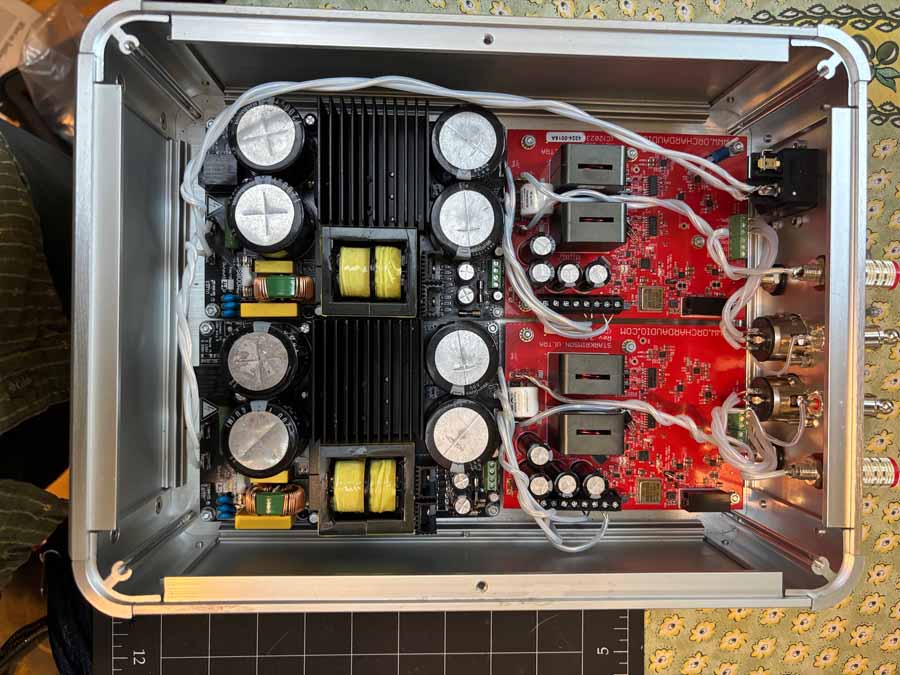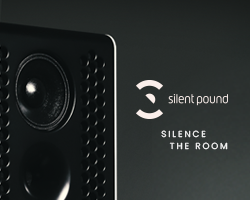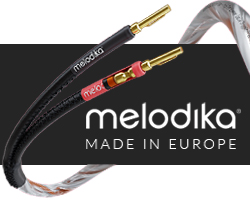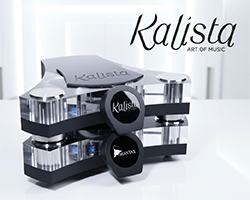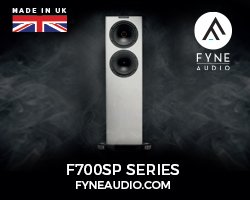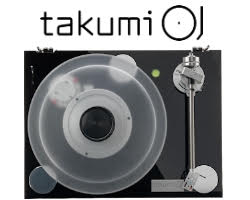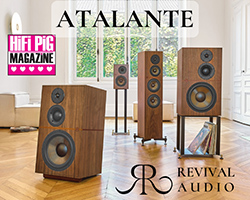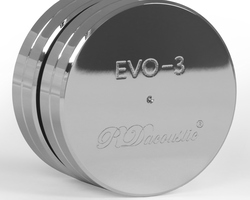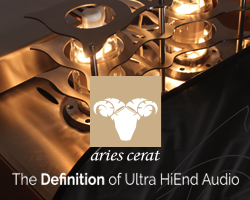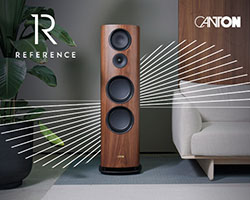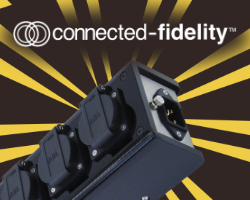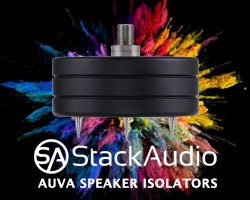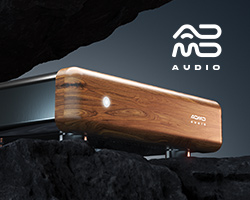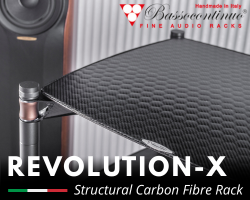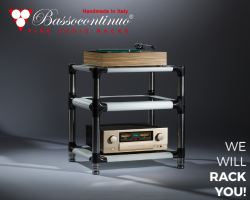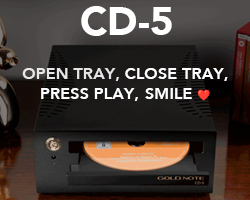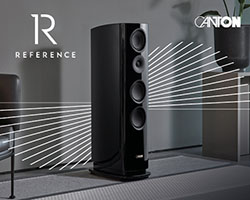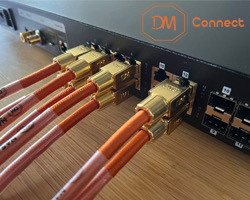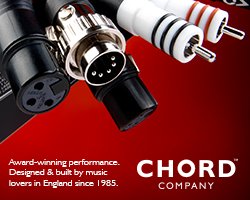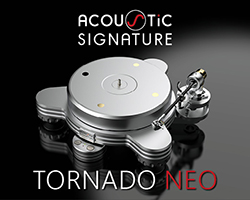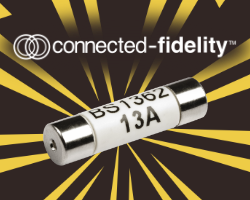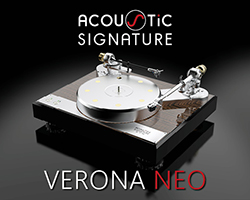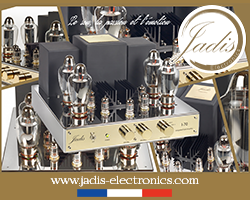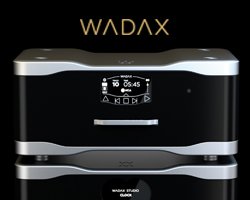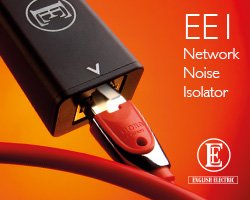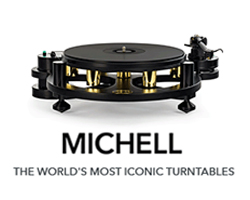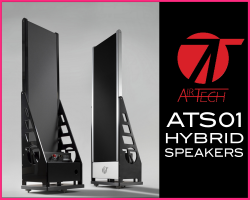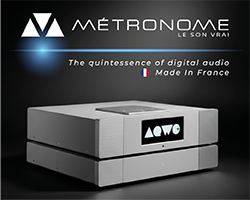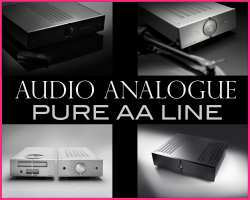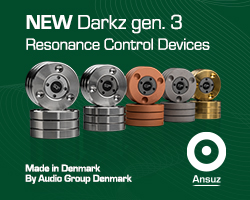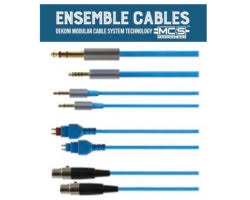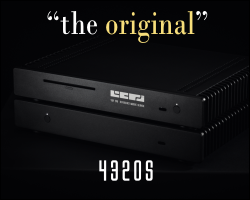ARGENTPUR GaN-FET MONOBLOC AMPLIFIERS REVIEW
ArgentPur Gan-Fet Monobloc amplifiers are made in the USA by Ernest Meunier and use Gallium Nitride semiconductors. The amps are also wired with pure silver wiring. Janine Elliot takes this interesting pair of monoblocs for a spin.

What do drones and Ernest Meunier’s new monobloc and stereo power-amplifiers have in common? Well, the newly designed microwave weapon, the “Leonidas”, being released by American Epirus to bring down drones in our horrible new world of wars, uses Gallium Nitride (GaN) semiconductors. Conventional microwave weapons to down war drones use heavy, fragile, and power-hungry magnetron vacuum tubes. Both the ArgentPur amplifiers and the new weapon use the unusual FE-transistors because they are not power-hungry nor do they get hot, two essential considerations, plus this also means they can now come in smaller packages. Whilst audiophile die-hards might still be debating the suitability of Class D switching amps in top-end HiFi, the number of GaN-FET amplifiers hitting the target in the world’s HiFi war is shooting up in the sky.
Ernest began ArgentPur (the French term for “Pure Silver”) by making pure silver cables. His early life was around the noise of pipe organs, ham radio, and building speakers. After leaving Brown University, having studied engineering, he went on to work in metrology (not the study of underground trains, but rather the science of measurement) and as a QA engineer. Like some HiFi manufacturers and reviewers these days, he is also a musician, and like me, he has a grand piano in his house, in his case a Steinway and mine a Grotrian Steinweg; both originating from those very same great German fingers that could turn metal and wood into the very best piano sounds. Ernest found that the sound of his beloved Model B, plus live performances at local concert halls in the USA, was so much better than even his own home reference HiFi system. Like many designers I have come into contact with over the years, he also built speakers for himself as a child. He believes that the best electronics use solid silver wiring, and has (like me inside my re-built Spendor BC1’s) experimented with using Silver to link up all his components, finding it superior to copper or any mixtures of metals. Indeed, he felt that his ArgentPur cables, when used with his Harbeth speakers, became even more “macrodynamic” as he puts it, even in their bass response – funny that my own rewired-BC1s also tightened up the bass-end. Now, I don’t want to get into any argument as to what is the best metal, dielectric or design philosophy in cables, as I don’t think it is that simple; my Townshend Isolda speaker cable conductors almost touch, but my TQ Silver’s couldn’t be further apart, tearing apart any argument about inductance. But if your philosophy works, then keep at it, I say. Apparently, Silver is 6% more efficient than any copper amalgam, just as the Gallium Nitride semiconductors are also more efficient (less heat production), so it really fits that by having created his own cables, Mr Meunier would later start to look at building amplifiers. He also believes that “maybe there’s something about solid Silver’s coherence that informs the ear-brain to squeeze out a bigger perceived bottom-end impact”. Without getting into a Peter Belt world, I can see that our brain can often make decisions for our ears (we think “louder” or “more treble” in A-B tests sounds best for the first few seconds of listening, just as our brain assumes escalators are moving stairs, but we immediately fall over when walking onto one that’s not working!) As a reviewer, I must never be tempted to simply let my brain or eyes do the listening; it’s my two ears that count! The philosophy that silver = bright and Class D sounds digital is as incorrect as my mum’s assertion that, as a child, if I pulled a face and the wind changed direction, it would always remain that way. Took me years to get over that one.


ArgentPur became a reality in 2022 in Medford MA, near Boston, when he connected his re-wired Verity Audio loudspeakers to his GaN-FET monobloc amplifiers using solid Silver conductors in roomy Teflon air-tubes. So great was the improvement that folk at importer and distributor Fedelis Distribution suggested he should start his own company.
The stereo amplifier is actually exactly the same as the monobloc versions (being dual-mono construction), the only difference being that they require just one power cable and only one box. The pair of monoblocs retail at $5900, whereas the single-chassis dual-mono construction stereo (“DUO”) comes in at $5300. With their solid aluminium construction, their small size takes up a conventional 17” width when put side by side. Ernest sent me the monoblocs, and amazingly, the delivery box all the way from the US of A was little more than I would expect for a DAC or server. The Monos arrived for me in individual Pelican-clone flight cases, allowing for easy and safe portability as well.
WHAT MAKES GaN A GAME CHANGER?
Many consider that silicon semiconductors are at the limit of their development, so some people, including Ernest, are turning to new techniques and materials. GaN-FET amplifiers tend to be an amazing 94% efficient, which will certainly favour our eco-warriors, though for me, it is the music rather than my electricity bill that is the foremost concern here. The use of GaN means small size, a low power consumption with switch-mode power supply, meaning no need for massive Toroidal doughnuts and rows of smoothing capacitors, and despite being a hot-new material gives very little heat-loss, unlike my power-thirsty Class-A amps! GaN-FET switched amplifiers also operate at a higher PWM (Pulse-Width Modulation) frequency (switching speeds) than conventional Class-D amplifiers and have low “dead” time. In basic terms, this means that the square waves at the switching node are “more square”; hence, a purer, more accurate sound. With the switching speed of GaN an octave higher than Silicon, one can have a much more benign low-pass filter and lower EMI. It is no wonder, therefore, that these advantages of GaN-FET technology are now being taken up by companies such as AGD, Peachtree, Orchard Audio, Filtronic, Texas Instruments, etc. The use of GaN-FETs ultimately leads to smaller components, improved efficiency, reduced switching losses, and higher power density.

INSIDE THE BOX
This amplifier is a very small product, and my initial thought was whether anything this size could be taken seriously by audiophiles who tend to like to see massive boxes lighting up in their living room (indeed, the front of the box doesn’t even have an LED to welcome your attention). However, this does mean that less dusting is required, and you can perhaps put the monoblocs right next to your loudspeakers.
All the important bits are at the back: XLR and RCA input, IEC input, and the loudspeaker terminals of course. All very high-class and silver-coated. Even the soldering is silver. Using ArgentPur silver cabling, the whole system will be silver from start to finish. No impurities are getting in the way of the sound.
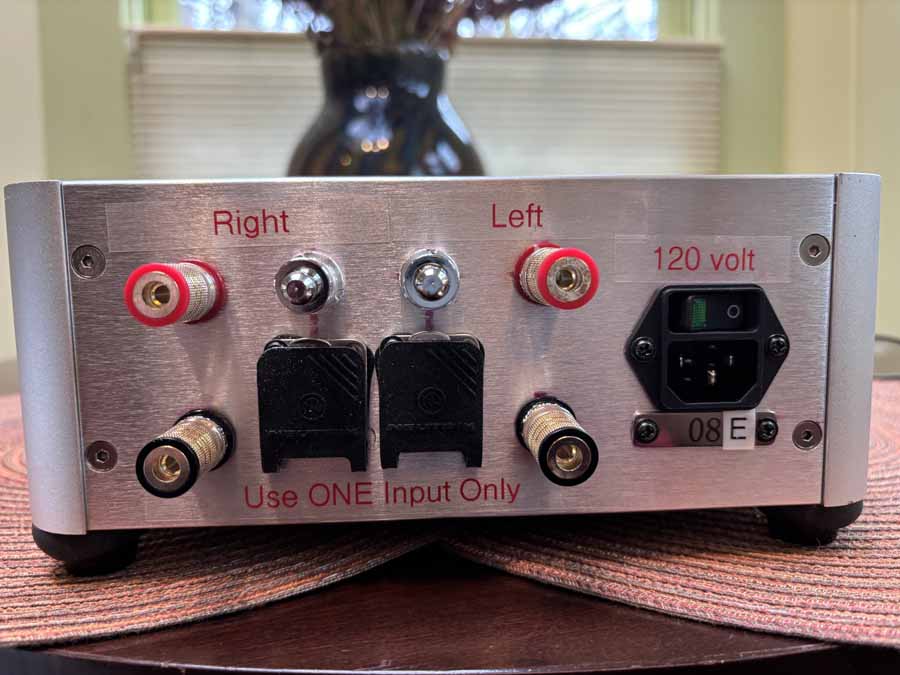
The off/on switch is part of the IEC terminal. Interestingly, only one box had a green LED on this toggle switch/IEC socket to tell me that I had indeed turned the toggle switch to “on”. Luckily, I persevere,d and the non-LED-supplied amp worked just fine, though it did give me a few seconds of worry it wouldn’t work.
Ernest did tell me not to plug things in or out when the unit is switched on, and I always agree with that philosophy. The Switched Mode Power Supply does have soft-start and overload protection, as does the GaN-FET module, but Ernie told me not to connect both RCA and XLRs at the same time as “mysterious things might happen…. and they won’t be musical!” The company always caution users to de-power the amps before switching speakers, just as a precaution against momentary shutdown. I didn’t want to explore that possibility and complied.
The components are good quality, including Mundorf SGO silver foil capacitors. The power supply capacitive reservoir is 72,000uF. The monoblocs are really small, with ready-made PCBs from Orchard Audio, so the inside of the ArgentPur is fairly sparse, all joined together with his cabling. That’s the beauty of Class D boards (such as from Hypex, Class D, etc.) when put next to my larger KT88 valve amplifiers and Krell! Ernest had previously heard the Orchard Audio ULTRA (high power) modules and wanted to see if he could improve on the sound using his silver wiring and modified SMPS.
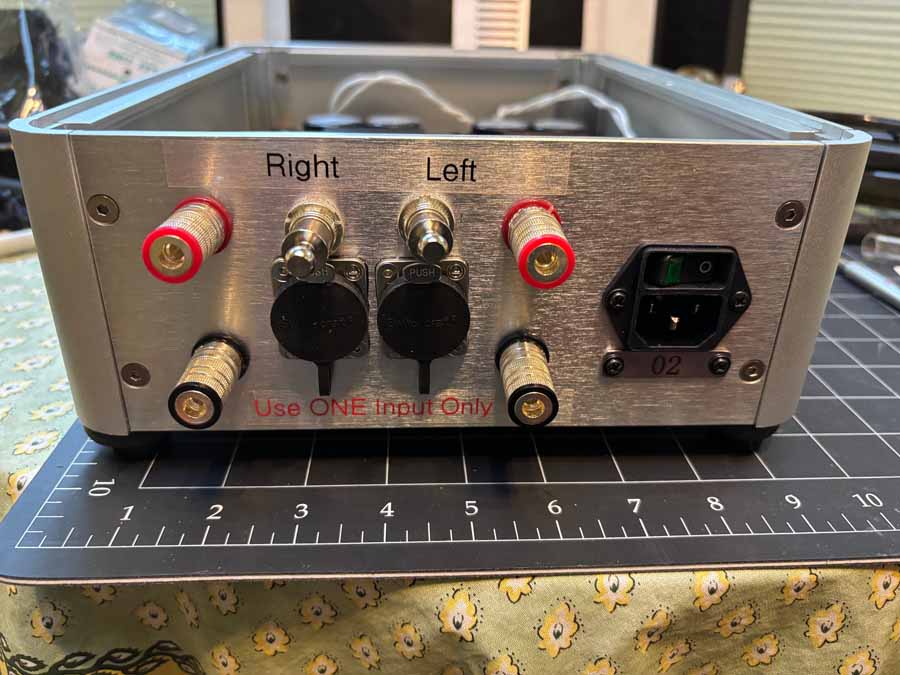
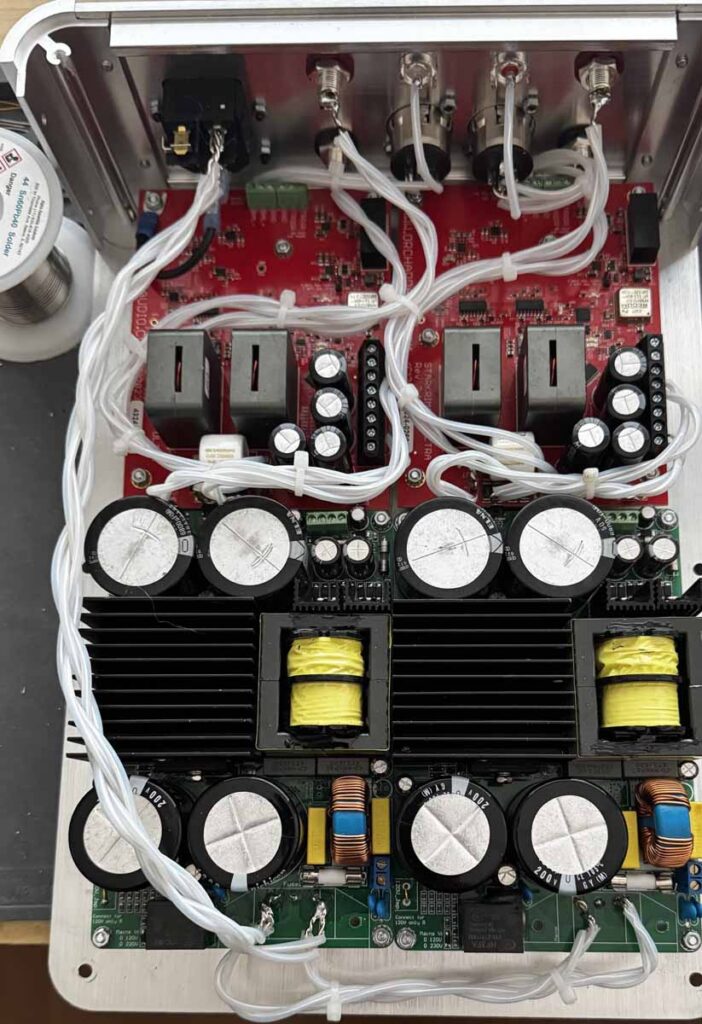
I must say, I am not a huge Class-D fan, so I went into this review with a very open view.
Ernest supplied the power amplifiers for review with his own pure silver cables, and whilst I did include them within my review, I also used my own wiring that I know so well. They included the gorgeous Hercules 1m XLRs with silver-plated connectors, Hercules 16 RCA and AGP12 2m banana-to-spade speaker connectors. All are brilliantly made. As a past organist and present Steinway owner, I knew Ernest had a high opinion on how the amplifier should sound, so equally, I chose much piano and organ music during my extended review. Similarly, where the sonic advantages of silver can sometimes seem to be in the higher frequencies, I chose much music with cymbals and brass. As well as my LCR passive Music First Audio preamplifier, I also used my valve Manley Steelhead as a first stage, using its variable resistor volume control (it has a line-level input as well as three phonos), as GaN-FET amps do seem to work well with a valve preamp.
The inside of the amps uses Leo Ayzenshtat’s optimised ULTRA balanced GaN-FET modules from Orchard Audio, powered by a custom 800W switch-mode power-supply with soft-start and ultra-high frequency switching (see earlier) for very low EMI and very high efficiency. All in/out and power-supply cables are twisted-pair ArgentPur solid silver in Teflon air-tubes. Capacitors in the critical signal path are Mundorf SGO (silver/gold/oil) varieties, intending to give good resolution and soundstage realism as compared with other GaN-FET, or indeed Class-D designs. Connectors are all silvered, plus Ernest has used Mundorf Supreme Silver/Gold solder. Ultimately, there is silver from start to finish! As Ernest told me, as no valves or other buffers are getting in the way to colour the sound, “thus (we have)the preverbial ‘straight wire with gain’”. Indeed, his connection with Peter Walker from Quad, who created that famous phrase, is that “Michael Rudd, a former Peter Walker student, provided Ernest with “a wealth of knowledge”. Underneath the aluminium box is a rubber sheet (and there is also another one inside the lid), which is for vibration damping, plus there are some vents underneath in case it gets hot (which it certainly didn’t!)
SOUND QUALITY
These amplifiers, being Class D, have no musical signature, apparently a hallmark of ArgentPur. Class D tends to have a very quick sound (GaN-FETs tend to have a 3-4-times faster slew rate than MOSFETS and even more against valves, so initial transients were going to be exceptionally fast). Also, the extreme bass tends to be tighter than from a Class-A amplifier. Whether this makes the music sound better is just for your ears. The days of needing to read technical specifications with a magnifying glass died after Lasky’s went to its maker in the sky. The “speed” was apparent from as soon as I switched on, and even more so after the circuitry had settled down after a few minutes, but I needed a sound that I would be happy to listen to for several hours without fatigue. I wanted to breathe the music and get as musically involved as Rachmaninoff or Pink Floyd would want me to be. This amplifier might suffer from no veiling of the sound or my added KT88 warmth, but did that make it better? Track 11 of Peter Gabriel’s ‘i/o’ has a beautiful string ensemble, but it just didn’t quite get my emotions peaking as high as from my KT88. Bass was there, as were the top frequencies, but the middle was not as full as I was used to.
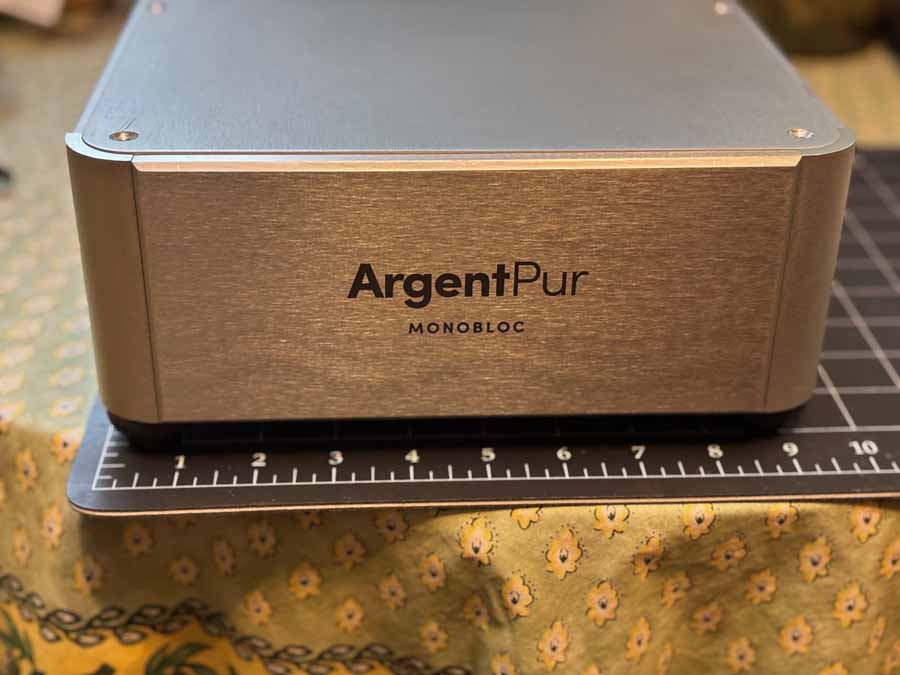
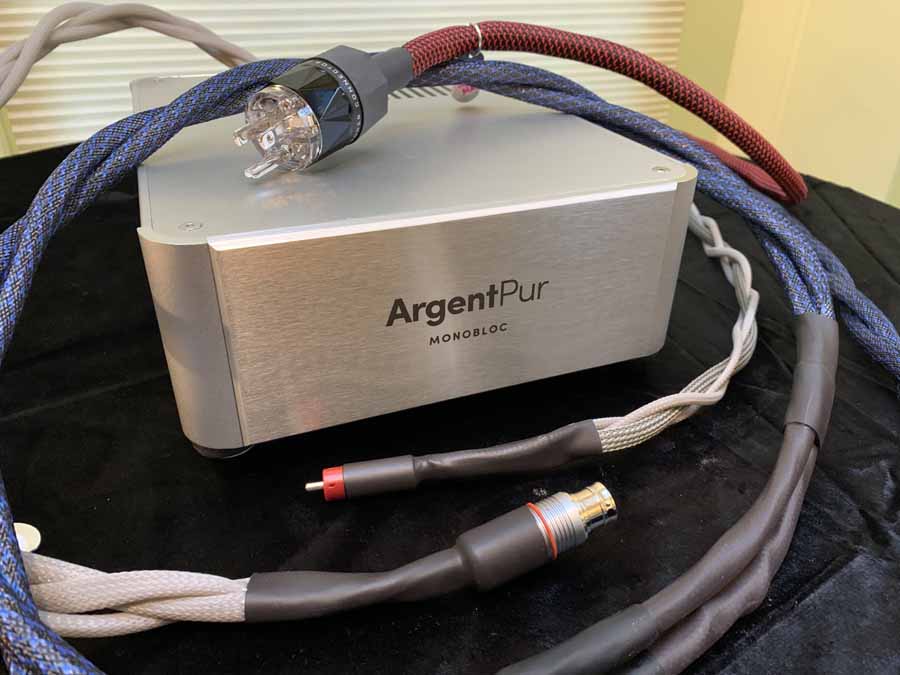

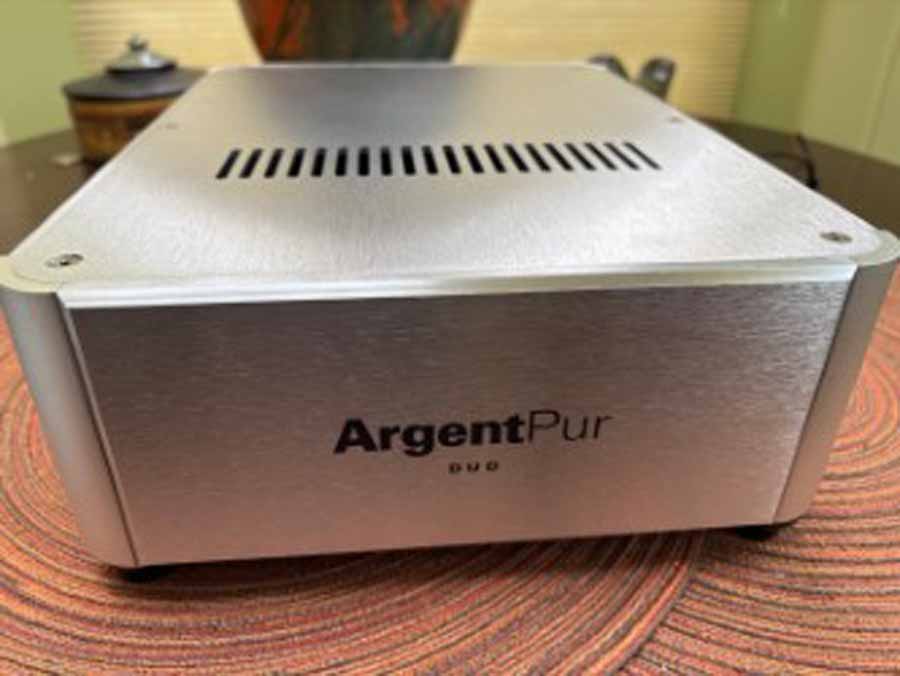
Kevin Putt’s Concerto for orchestra is a work I have really enjoyed listening to over the past few months. It is full of brass harmonics and string warmth, and the fourth movement exudes detail and excitement, particularly from the percussion. The music from the ArgentPur was sparklingly clean, but I needed to hear more musicality, so I turned to Nat King Cole’s “L-O-V-E”. I didn’t need to spell out my own admiration for this amplifier; as well as the detail, particularly in the strings and percussion, I could clearly hear Nat’s addictively glossy voice. The trumpet was pin-sharp, and my warm LS5/9s were sounding more like my Stax Electrostatic EarSpeakers.
So, the top was fast and detailed, but how was the bass?
Time to play Sting’s “A Thousand Years”. This work starts with a very deep burble. This really tests the lower end of the frequency cycle, and the ArgentPur gave it a very controlled and well-placed performance. If this were my Krell or a Dan D’Agostino, I’d know about it. Here, the amplifier just performed the lower frequencies in a well-mannered demeanour, with a tight rather than woolly bass grip. So far, I had been mixing silver with my copper cables, and the sound was really tight and fast.
Rachmaninoff’s Piano Concertos showed detail (Yuja Wang, LA Phil, 2023), though the output from my 2.1V Bluesound Node RCA output is never that grand. This means turning up my preamp to 55% or more. This is a very quiet amplifier at over 120dB, and gives a startlingly clear performance. Playing CDs from my much higher-output Krell upped that angst, especially the tight opening drums from Jethro Tull’s “The Betrayal of Joshua Kynde”. I felt this was so fast and almost 8K across what I normally consider my “refined” speakers. Similarly, the start of Peter Gabriel’s “Panopticom” had a tightness and anger in the “dark mix” version that the ArgentPur really could understand and get hold of. Everything from the amplifier was tight, and that included details that I just couldn’t hear from other amplifiers.
Every album I played, from pop, jazz, classical and world music, was handled to perfection, and the pure-silver cables he enclosed in the box, similarly, in fact, even more so, gave me the chance to get as close to the sound engineering as I possibly could. Now, that would have been fine when I was a sound engineer at the BBC or creating my own music, but I wanted something even greater, something that is not easy to explain; I wanted to live and breathe the music, but I was slightly suffocating in the digits rather than the notes. The soundstage was excellent, but not so much front to back. The different instruments in that Rachmaninoff were just from left to right. I couldn’t really sense the brass at the back or the oboe behind the viola as much as I hoped. However, the amplifier showed me transparency rather than brightness, power rather than loudness, and grip rather than suffocation. This amplifier really offered me a new excitement to my listening, and I really wanted to say it was the best thing I had ever heard, and, rather than using the ancient mobile phone operator’s tag line of “the future is Orange”, that the future is GaN-FET. But whilst silicon might be aged, and tubes even older, if it works, why change it? My ears felt like they were in their teens again, with all that top-end detail and speed I don’t normally hear, but I felt the important midrange suffered; the voices and violins were a little too quiet. I must admit, though, after my initial scepticism of the technology, that Class D and GaN might indeed be a perfect marriage, but at the moment, it is just on its honeymoon. And if this is their first few years together, then I would hope to perhaps sense just a little more romance. Where my MFA Baby Reference passive preamplifier is perfectly transparent, so, too, is the ArgentPur, which is why I concluded that a valve pre-amplifier (hence I also used the line-input on my valve Manley Steelhead) would be the perfect partner to give it that romance.
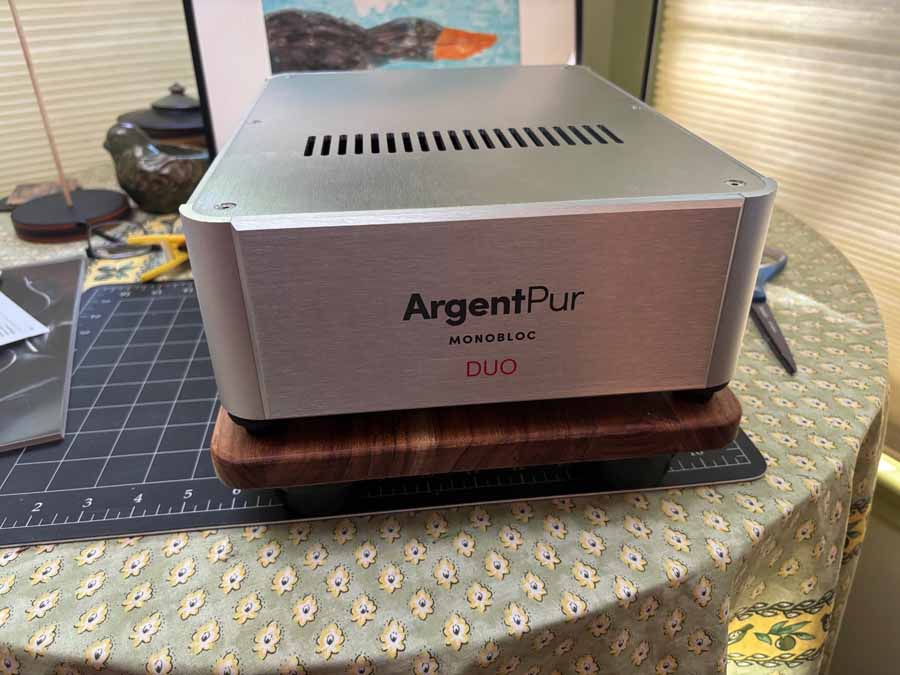
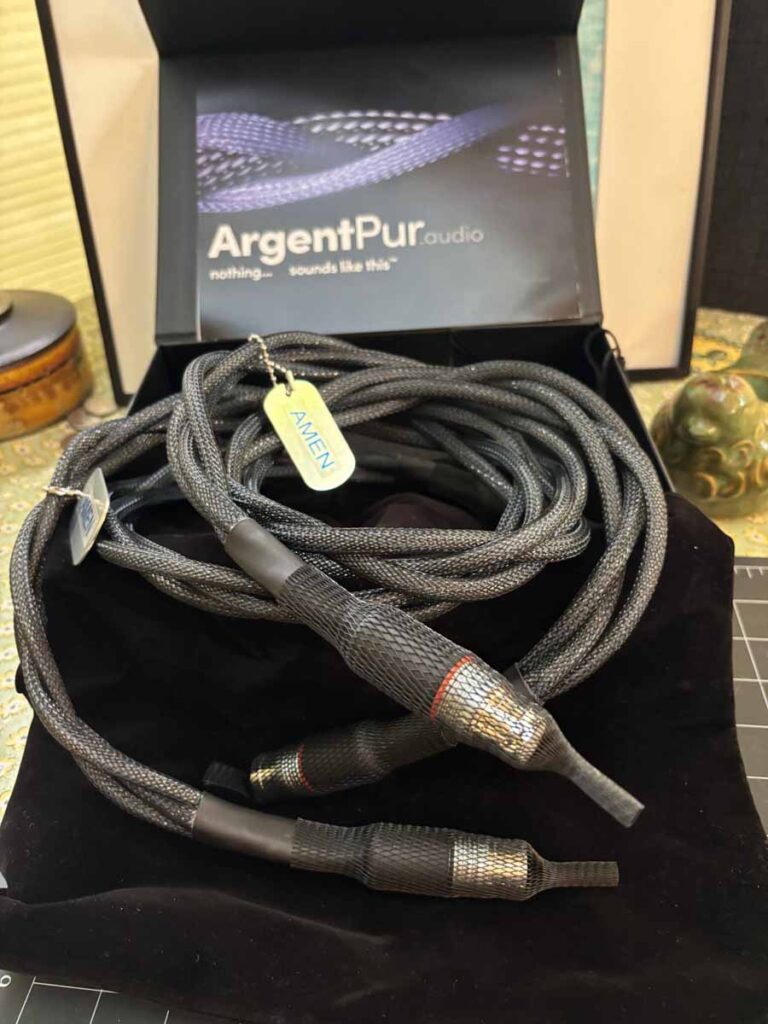
QUIBBLES
It is hard to find any fault in the design and build of this amplifier. It really is a very fast and exciting sound covering all frequencies, but I would like to experience just a little bit more musicality in the midrange to get me totally hooked on the tech.
With a green LED on the IEC socket at the rear, I would have preferred to see a light somewhere on the front. Apparently, Ernie decided not to have a power switch with an LED at the front, as that would add a high-voltage line up and down the chassis. But a 2V LED should be OK? There are interior LEDs, as I noticed colours escaping through holes at the rear, which looked good when all was pitch-black.
CONCLUSION
It was great to have to do lots of technical research on Gallium Nitride before I listened to this product, and I could understand all of that technology in the music I played, experiencing all that speed and detail I expected. If you don’t like to miss a single scratch or byte, then this really is the amplifier for you. It works with so much ease, and despite being SMPS (Switch Mode Power Supply), I didn’t feel any shortness in power when the music needed it. Whilst it had all the grip and detail of Class-D and the power output of Class-A, this amplifier still knows how to mind its P’s and Q’s. Maybe it’s just a little too polite.
AT A GLANCE
Build Quality:
Simple and classy looks, and solid build
Sound Quality:
Speed and detail are astounding
Value For Money:
Around $5900 gets you a pair of 500W (4-ohm) power amps that more than justify their price point
We Loved:
Speed of transients from percussion
Accurate performance of all types of music
Efficiency and low power consumption
Open and colourless sound
We Didn’t Love So Much:
Would like an LED at the front!
Just doesn’t quite hit my “wow” spot in the midrange
Elevator Pitch Review: When all we do is talk about valve or silicon-based amplifications, it is great to be able to try out something different. Whilst Class-D and silver cabling are nothing new, preconceived expectations of this meaning “bright” and “fast” aren’t actually accurate. And the number of people who incorrectly tell me the “D” in Class D stands for “Digital”, I couldn’t count using even all my fingers and toes. Luckily, I started listening to this Gallium Nitride FET Class D amplifier with a totally blank sheet, and was quite surprised at what I concluded.
You learn something every day!
Price:
Monoblocs $5900 (pair)
($6200 with custom 2″ floor stands in either black Richlite, glossy black granite, or matte solid aluminium)
Dual-mono construction stereo (“DUO”) $5300.

Janine Elliot
System Used
Bluesound NODE and Qobuz (digital streaming); Pre-Audio GL-1102N/Ortofon Kontrapunkt b (turntable); Manley Steelhead (phonostage and valve line-level pre-amp); Krell KPS20i (CD); Graham Audio LS5/9 plus Townshend Supertweeter (loudspeakers); Tellurium Q and Townshend cables, Coppice Audio stand and Townshend rack.
SUPPLIED SPECIFICATIONS
Output Power: 250W/ch 8-ohm (500w/ch 4-ohm, 250w.ch 2-ohm (protection limited) )
Power supply: 800W nominal SMPS with soft-start and overload protection. 940w peak
Size: 8.5 x 12.5 x 3.5 inches (22 x 29 x9 cm)
Weight: 7lbs (3.3kg)
Damping Factor: >700
S/N:> 120dB (A-weighted)
Distortion and Noise: < 0.08% at 500w/4ohm
Input Impedance: 44k balanced, 22k single-ended
Power consumption: 11W idle
AC power 95-125v and internally resettable for 240v

























































